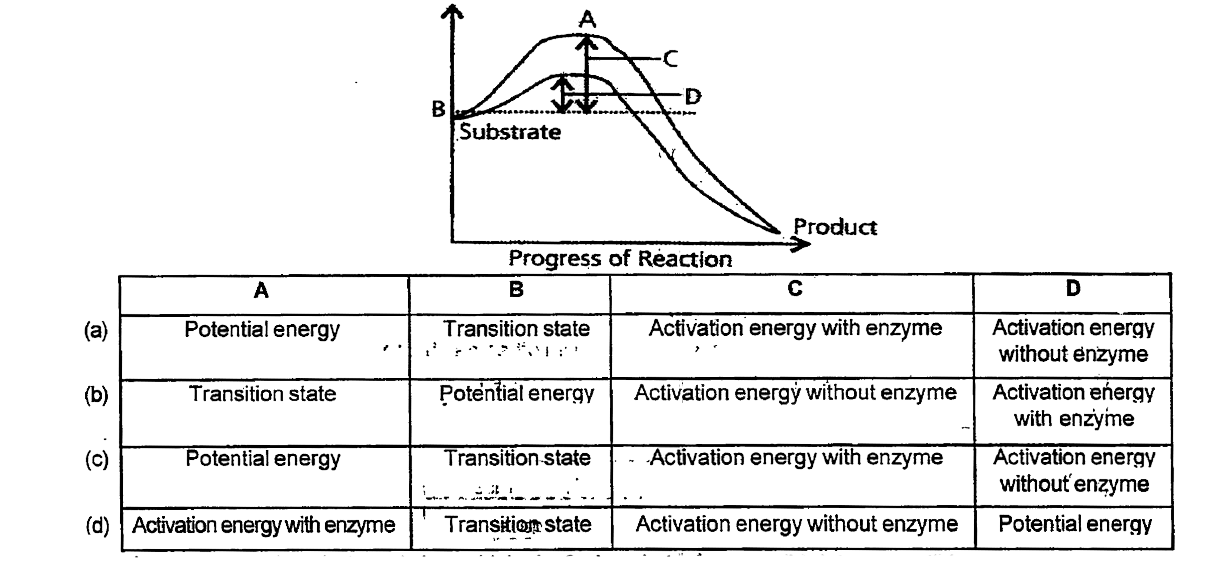Callase enzyme which dissolved callose of pollen tetrads to separate four pollends is provided by
Pollen grains
Middle layer
Tapetum
Endothecium
The correct Answer is:C
Step by step video, text & image solution for Callase enzyme which dissolved callose of pollen tetrads to separate four pollends is provided by by Biology experts to help you in doubts & scoring excellent marks in Class 12 exams.
Updated on:21/07/2023Topper's Solved these Questions
- SEXUAL REPRODUCTION IN FLOWERING PLANTSBOOK - MOTIONCHAPTER - SEXUAL REPRODUCTION IN FLOWERING PLANTSEXERCISE - Exercise - 1(POLLINATION, FERTILISATION,EMBRYO, SEED)
36 Videos
- SEXUAL REPRODUCTION IN FLOWERING PLANTSBOOK - MOTIONCHAPTER - SEXUAL REPRODUCTION IN FLOWERING PLANTSEXERCISE - Exercise - 2
48 Videos
- SEXUAL REPRODUCTION IN FLOWERING PLANTSBOOK - MOTIONCHAPTER - SEXUAL REPRODUCTION IN FLOWERING PLANTSEXERCISE - CHECK YOUR CONCEPTS-2(POLLINATION, FERTILIZATION,ENDOSPERM, EMBRYO, SEED ETC.)
5 Videos
- SENSORY ORGANSBOOK - MOTIONCHAPTER - SENSORY ORGANSEXERCISE - EXERCISE - 3
21 Videos
- STRATEGIES FOR ENHANCEMENT IN FOOD PRODUCTIONBOOK - MOTIONCHAPTER - STRATEGIES FOR ENHANCEMENT IN FOOD PRODUCTIONEXERCISE - Exercise - 3(AIIMS-2015)
13 Videos
Similar Questions
Knowledge Check
Which of the following provides the enzyme required to dissolve the callose plugs of pollen tetrads ?
AEpitheliumBTapetumCMiddle layerDEndotheciumOne of the effects of Gibberellins is to induce the synthesis of amylase enzyme which causes the break down of starch and provides nourishment to the embryo in the seed. This phenomenon leads to the germination of seed. The hormone antagonist to this phenomenon is
AAuxinsBKinetinCABADEthyleneSolubility is an important characteristic of substances. Some materials which are soluble in water may not be soluble in another liquid. When a substance dissolves completely in a liquid, then the combination is called a solution. The substance which dissolves is called the solute. The liquid which dissolves it, is called the solvent.If two liquids mix together completely, then they are called miscible otherwise they are immiscible.
Which of the following pairs will make separate layers on mixing?AMilk and waterBAlcohol and waterCOil and waterDSugar syrup and water
Name four animals which provide us food.
View Solution..................... is the phenomenon by which the synthesis of a set of enzymes leading to a product is shut down, when the product is provided from outside.
View SolutionThe figure given below shows the conversion of a substate into product by an enzyme. In which one of the four options (a-d) the components of reaction labelled as A, B, C and D are identified correctly?

View SolutionThe figure given below shows the conversion of a substrate into product by an enzyme. In which one of the four options (a-d) the components of reaction labelled as A, B, C and D are identified correctly

View SolutionA solid substance is dissolved in water. Which one of the following methods is used to separate it?
View Solution